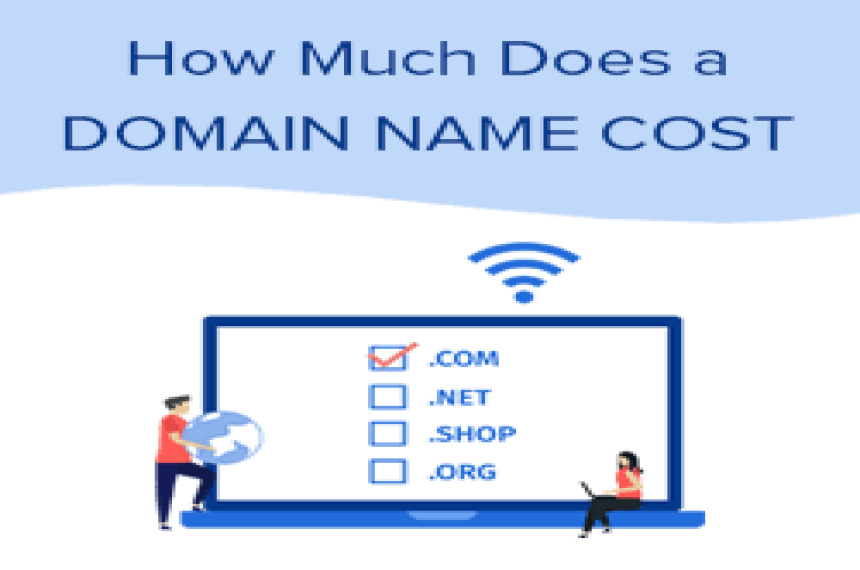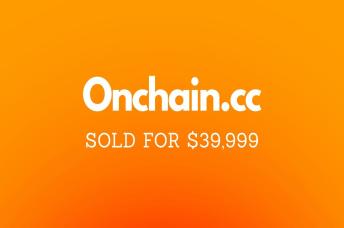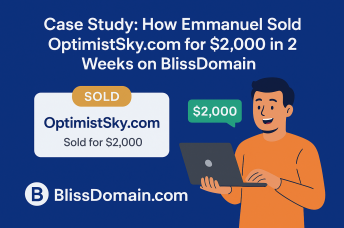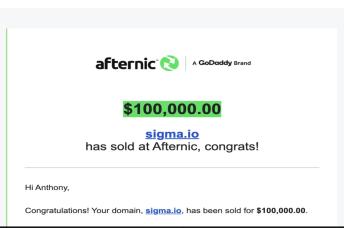How to Price Your Domain Name
16 Aug, 2025

There is no secret formula for pricing your domain name for a quick sale. You’ve probably heard people say, “A good domain name sells itself.” That may be true in some cases, but it’s not always that simple—and that’s likely why you’re reading this article.
Let’s explore some scenarios to understand how domain pricing works.
Scenario 1: Voice.com vs. Rocket.com
Take two well-known domain sales: Voice.com sold for $30 million in 2019, while Rocket.com sold for $14 million in 2023. Many people questioned why Voice.com commanded such a high price compared to Rocket.com.
Looking at the data, Rocket.com was registered in 1991, while Voice.com was registered in 2001, according to the official Whois database maintained by ICANN. Furthermore, Rocket is taken in an estimated 444 extensions as an exact match, whereas Voice is taken in approximately 429. So, Rocket.com was registered a full decade earlier and is more widely registered across extensions, yet it sold for less.
This clearly shows that neither registration year nor the number of extensions a domain is taken in were the decisive factors in determining their final prices. What truly matters is the perceived value from the buyer’s perspective—what the domain represents to their brand, mission, or market position.
Most domain investors don’t own ultra-premium, one-word .coms like Voice or Rocket. Many hold strong names in emerging industries or alternative extensions. Even without owning ultra-premium names in .com, the same principles still apply.
Scenario 2: Understanding the Market
Your domain is not always worth what you believe it is. Overpricing can discourage serious buyers from even making an offer. Underpricing, especially to inexperienced buyers, might give the impression that the domain lacks real value.
A common approach is to let a buyer make the first offer. This allows room for negotiation and can help reveal how serious they are. However, not every buyer wants to engage in back-and-forth. Some prefer a fixed price, knowing exactly what it will cost them to secure the domain.
In those cases, you should set a Buy It Now price that’s reasonable—one that doesn’t leave you at a loss but is close enough to recent comparable sales to feel realistic to the buyer. Another strategy is offering a lease-to-own option, which spreads out the payments and can make the price more attractive.
Please know, just because a buyer shows interest doesn’t mean they’re the right fit. If the prospective buyer is unwilling to meet a fair asking price, don’t be afraid to let them walk. There’s a strong chance that the next inquiry—or the one after that—will come from someone who understands the domain’s true value and is ready to move forward.
Scenario 3: Rethinking Pricing Strategies
Some domain investors argue that hand-registered domains should be priced between $999 and $2,999. While this range may apply to domains with partial value, it’s important to remember that every domain name was once hand-registered.
As markets evolve and consumer demand shifts, so too does the need for new products, services, and companies. When that demand rises, domains that align with those needs logically increase in value. Companies—especially venture-backed startups—are often willing to invest in premium domains that position them ahead of the competition.
When money is flowing into a sector, pricing strategies must evolve accordingly. If your domain aligns with an emerging industry or a growing trend, it’s perfectly okay to price it well above that $2,999 range.
There are recent examples where hand-registered domains have sold for six figures. One particular sale involved a domain that was hand-registered and sold for $300,000. The owner has held the name for a decent number of years. Patience, timing, relevance, and vision made the difference.
Scenario 4: Investors’ Feedback vs. End-Users
A helpful step in domain pricing is seeking feedback from other domain investors. Posting your domain on social media platforms like Namepros can give you a snapshot of what your peers believe it's worth.
That said, what an investor sees and what a business sees can be very different. Investors typically evaluate a domain based on resale potential. End users—those running companies—are more focused on branding power, trustworthiness, memorability, and long-term ROI.
In this scenario, a domain investor’s ability to educate the buyer becomes a valuable skill. Explaining why the domain is rare, meaningful, or strategically important may help justify your asking price. When buyers understand the strategic advantages a domain offers, they are often more willing to pay a price that reflects that value.
Scenario 5: Comprehensive Valuation Beyond Intuition
There’s another approach to pricing that combines human experience, research, and technology. This method involves detailed analysis that includes AI-driven tools, historical sales data, market trends, and proprietary evaluation strategies.
While we won’t dive deeply into that method in this article, it’s something I cover extensively in my upcoming book.
Final Thoughts
A domain name is ultimately worth what the buyer is willing to pay and what the seller is willing to accept. That agreement between both parties defines the market value at that moment in time.
Your job as a seller is to make sure your pricing reflects not only the domain’s potential but also current market realities, buyer expectations, and the strategic opportunities the domain presents. When you approach pricing with strategy, data, and flexibility, you're far more likely to land the right buyer at the right price.
Thank you for reading. I hope this gives you clarity and confidence in your domain pricing journey.
Disclaimer: The information provided here is for informational purposes only. It is important that you carry out proper research before setting the price for your domain names, engaging with buyers, or making any other decisions related to pricing your domain names.
Some domain investors argue that hand-registered domains should be priced between $999 and $2,999. While this range may apply to domains with partial value, it’s important to remember that every domain name was once hand-registered.
As markets evolve and consumer demand shifts, so too does the need for new products, services, and companies. When that demand rises, domains that align with those needs logically increase in value. Companies—especially venture-backed startups—are often willing to invest in premium domains that position them ahead of the competition.
When money is flowing into a sector, pricing strategies must evolve accordingly. If your domain aligns with an emerging industry or a growing trend, it’s perfectly okay to price it well above that $2,999 range.
There are recent examples where hand-registered domains have sold for six figures. One particular sale involved a domain that was hand-registered and sold for $300,000. The owner has held the name for a decent number of years. Patience, timing, relevance, and vision made the difference.
Scenario 4: Investors’ Feedback vs. End-Users
A helpful step in domain pricing is seeking feedback from other domain investors. Posting your domain on social media platforms like Namepros can give you a snapshot of what your peers believe it's worth.
That said, what an investor sees and what a business sees can be very different. Investors typically evaluate a domain based on resale potential. End users—those running companies—are more focused on branding power, trustworthiness, memorability, and long-term ROI.
In this scenario, a domain investor’s ability to educate the buyer becomes a valuable skill. Explaining why the domain is rare, meaningful, or strategically important may help justify your asking price. When buyers understand the strategic advantages a domain offers, they are often more willing to pay a price that reflects that value.
Scenario 5: Comprehensive Valuation Beyond Intuition
There’s another approach to pricing that combines human experience, research, and technology. This method involves detailed analysis that includes AI-driven tools, historical sales data, market trends, and proprietary evaluation strategies.
While we won’t dive deeply into that method in this article, it’s something I cover extensively in my upcoming book.
Final Thoughts
A domain name is ultimately worth what the buyer is willing to pay and what the seller is willing to accept. That agreement between both parties defines the market value at that moment in time.
Your job as a seller is to make sure your pricing reflects not only the domain’s potential but also current market realities, buyer expectations, and the strategic opportunities the domain presents. When you approach pricing with strategy, data, and flexibility, you're far more likely to land the right buyer at the right price.
Thank you for reading. I hope this gives you clarity and confidence in your domain pricing journey.
Disclaimer: The information provided here is for informational purposes only. It is important that you carry out proper research before setting the price for your domain names, engaging with buyers, or making any other decisions related to pricing your domain names.





